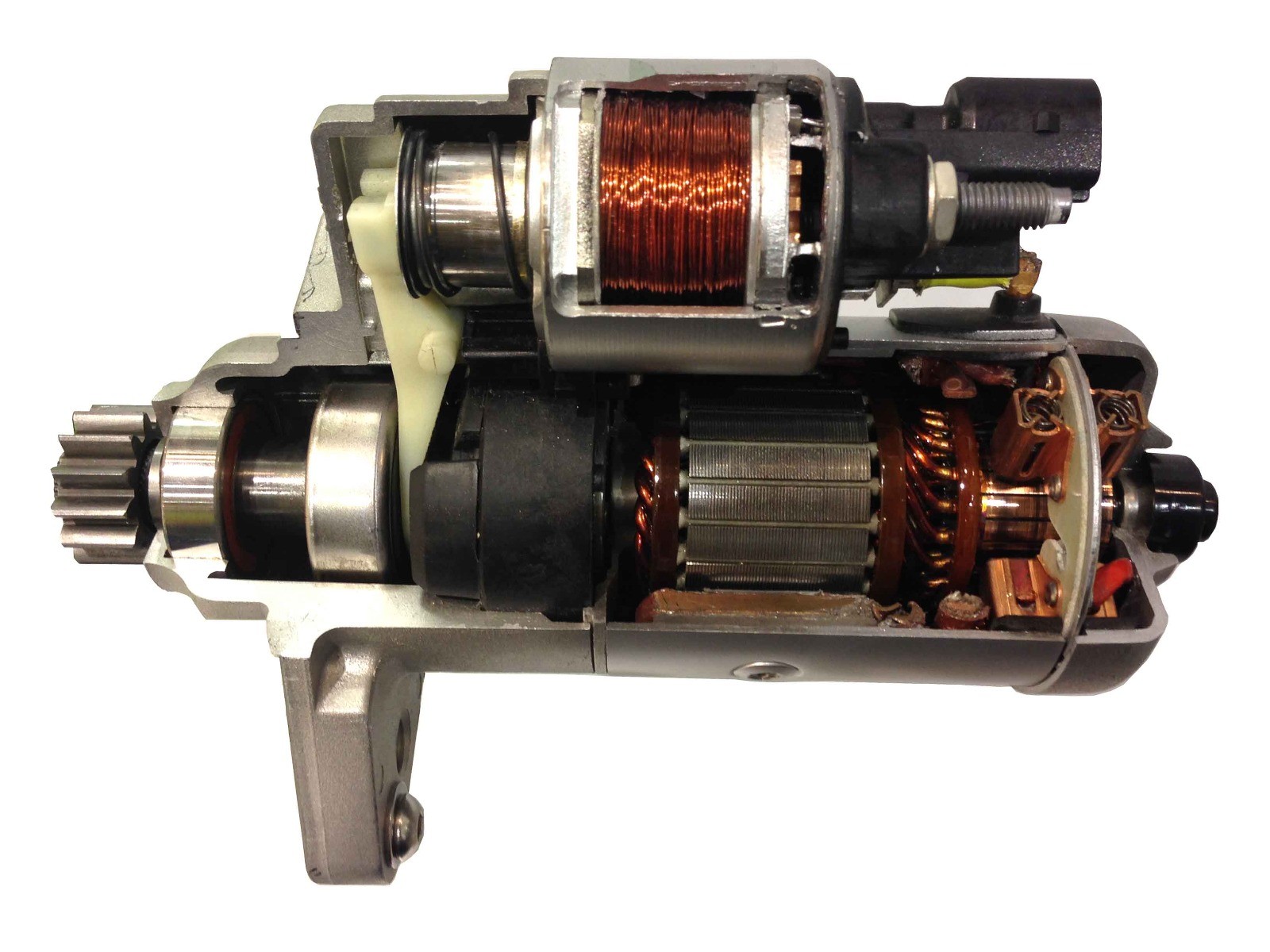Starting your car seems simple—turn the key, and the engine roars to life. But this ignition process relies heavily on the starter motor, a robust component with several key parts working in perfect harmony. Understanding these Car Starter Motor Parts is crucial for maintenance and troubleshooting. Let’s delve into how a starter motor functions and explore its essential components.
When you ignite your car, the starter motor’s primary job is to crank the engine, initiating the combustion cycle. This cranking action allows the engine to draw in air, a necessary step for fuel combustion. Without a functioning starter motor, the engine won’t turn over, leading to a no-start condition. The starter motor bridges this gap, converting electrical energy into mechanical force to set the engine in motion.
The process begins when you turn the ignition key. This action activates a series of events within the starter motor. A pinion gear, located on the starter motor, needs to engage with the flywheel ring gear, which is attached to the engine’s crankshaft. Upon ignition, an electromagnet within the starter motor engages, propelling a rod outwards. This rod pushes the pinion gear to mesh with the flywheel. Once engaged, the starter motor spins, rotating the engine crankshaft and initiating the intake of air and fuel. As the engine starts and takes over the process, the starter motor disengages, retracting the pinion gear to prevent damage and prepare for the next start.
Key Car Starter Motor Parts and Their Functions
To fully grasp the starter motor’s operation, let’s explore its individual components:
Armature
The armature is essentially the rotating heart of the starter motor. It’s an electromagnet mounted on the drive shaft, supported by bearings for smooth rotation. Constructed with a laminated soft iron core and wrapped with numerous conductive loops or windings, the armature is responsible for generating the mechanical force that turns the engine.
Commutator
Positioned at the rear of the starter motor housing, the commutator is a critical part for electrical conduction. It’s a section of the armature shaft where the brushes make contact to transmit electricity. The commutator consists of two plates attached to the armature’s axle, providing the electrical connections for the armature’s coil.
Brushes
The brushes are conductive components that maintain electrical contact with the rotating commutator. They press against the commutator, allowing current to flow to the armature windings. These brushes are essential for delivering the electrical energy needed to create the magnetic field in the armature and initiate rotation.
Solenoid
The solenoid acts as an electrical switch and a mechanical actuator. It contains two wire coils wrapped around a movable core. When the ignition is turned, the solenoid receives an electrical signal from the car battery. This signal energizes the coils, creating a magnetic field that moves the core. This movement serves two crucial functions: closing the high-current electrical circuit to power the starter motor and mechanically engaging the pinion gear with the flywheel.
Plunger
The plunger is the movable core within the solenoid. Powered by the vehicle’s battery and the solenoid’s magnetic force, the plunger is pushed forward. This forward motion is directly linked to the lever fork and pinion gear, initiating the gear engagement process.
Lever Fork
Connected to the plunger, the lever fork translates the plunger’s linear motion into a sideways movement. As the plunger moves forward, it pushes the lever fork, which in turn, activates the pinion gear, moving it towards the flywheel for engagement.
Pinion
The pinion is a specialized gear designed to mesh with the flywheel ring gear. It’s a combination of a gear and springs, engineered to engage smoothly and effectively. When the starter motor is activated, the pinion extends and engages with the flywheel, transferring the starter motor’s rotational force to the engine’s crankshaft. This engagement spins the engine, initiating the combustion process.
Field Coils
The field coils are stationary electromagnets housed within the starter motor casing. Typically consisting of two to four coils connected in series, they are energized by the battery. These coils create a strong magnetic field around the armature when current flows through them. This magnetic field interacts with the magnetic field of the armature, causing the armature to rotate and generate the necessary torque to crank the engine.
Conclusion
Understanding the intricate workings of car starter motor parts provides valuable insight into your vehicle’s ignition system. Each component, from the armature to the pinion, plays a vital role in starting your car. Knowing these parts and their functions can aid in diagnosing starter motor issues and ensure your vehicle starts reliably every time. For further reading and to explore related components, you can check out resources on automotive electrical systems and engine mechanics.
